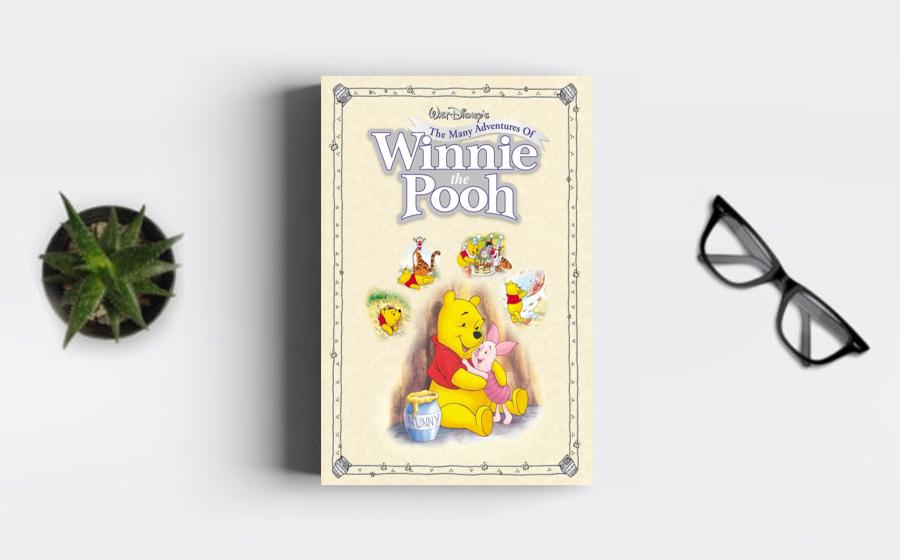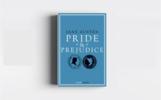"Winnie the Pooh" is not just a children's book; it's
a timeless masterpiece that has woven itself into the
fabric of childhoods across generations. Published in
1926, the adventures of Pooh and his friends in the
Hundred Acre Wood have become an enduring classic,
cherished by readers young and old. In this review,
we'll explore why "Winnie the Pooh" stands the test of
time, capturing hearts with its simplicity, wisdom, and
the everlasting magic of friendship.
At the heart of the timelessness of
"Winnie the Pooh" lies the enchanting setting of the
Hundred Acre Wood. This idyllic landscape, with its
rolling hills, dense forests, and bubbling streams,
serves as the backdrop for the whimsical adventures of
Pooh and his friends. A.A. Milne's vivid descriptions
and E.H. Shepard's iconic illustrations bring this
magical world to life, creating a timeless playground
where imagination knows no bounds.
The Hundred
Acre Wood is not just a static setting; it becomes a
character in its own right, a place where the ordinary
becomes extraordinary, and every tree, meadow, and river
holds the promise of adventure. The universality of this
natural setting ensures that children from different
eras can relate to the wonder and curiosity inspired by
the great outdoors.
One cannot
discuss the timelessness of "Winnie the Pooh" without
delving into its cast of endearing characters. From the
honey-loving bear with very little brain to the timid
but loyal Piglet, the perpetually gloomy Eeyore, the
bouncy and exuberant Tigger, the wise Owl, the practical
Rabbit, and the nurturing Kanga with her joey Roo, each
character is a distinct personality that contributes to
the richness of the narrative.
Milne's
characterizations are timeless because they tap into
universal qualities and emotions. Pooh and his friends
are not just animals with anthropomorphic traits; they
embody facets of human nature. The insecurities of
Piglet, the boundless enthusiasm of Tigger, and the
eternal pessimism of Eeyore resonate with readers of all
ages. These characters are not bound by cultural or
temporal constraints, they are friends forever etched in
the hearts of those who embark on their adventures.
One of the enduring charms of "Winnie
the Pooh" lies in the simple yet profound wisdom
imparted by its titular character. Pooh, the bear of
very little brain, possesses a unique clarity of thought
that cuts through the complexities of life. His musings
on friendship, the pursuit of honey, and the art of
doing nothing carry a timeless quality that transcends
the boundaries of age.
Milne cleverly weaves
philosophical insights into Pooh's seemingly simple
statements. Pooh's reflections on the value of doing
nothing, the importance of friends, and the sweetness of
honey resonate with readers on a deeper level. The
wisdom encapsulated in Pooh's words is not confined to
childhood; it transcends into adulthood, offering a
comforting reminder of life's essential truths.
A.A. Milne's narrative wit and humor
contribute significantly to the timelessness of "Winnie
the Pooh." The author's playfulness with language,
clever wordplay, and delightful dialogues create a
lighthearted atmosphere that endears the stories to both
children and the adults who share them. Milne's humor is
not reliant on fleeting trends or cultural references
but rather stems from the timeless themes of friendship,
misunderstandings, and the joy found in life's simple
pleasures.
The clever interplay of words, the
gentle satire of adult behavior through the eyes of
innocent creatures, and the humorous situations the
characters find themselves in ensure that the laughter
induced by "Winnie the Pooh" remains fresh and enjoyable
across generations. The wit embedded in the narrative
ensures that adults can appreciate the humor even as
they read the stories aloud to the next generation.
E.H. Shepard's illustrations are inseparable from
the timelessness of "Winnie the Pooh." His iconic
depictions of the characters and the landscape of the
Hundred Acre Wood complement Milne's narrative with an
enduring visual charm. Shepard's artistry captures the
essence of each character, creating images that have
become synonymous with the beloved tales.
The
simplicity and expressiveness of Shepard's illustrations
contribute to the accessibility of "Winnie the Pooh."
The visual elements provide a timeless visual language
that transcends linguistic and cultural barriers, making
the stories universally appealing. The ability of these
illustrations to evoke a sense of nostalgia ensures that
readers, young and old, can connect with the magic of
the Hundred Acre Wood.
The cultural
impact of "Winnie the Pooh" extends beyond the printed
page. The stories have been adapted into various forms,
including animated films, television series, and stage
productions. The enduring popularity of Pooh has led to
merchandise, theme park attractions, and a continued
presence in popular culture.
The adaptability of
"Winnie the Pooh" across different media underscores its
timeless appeal and cultural significance. Pooh's image,
catchphrases, and the themes of friendship have become
ingrained in the collective consciousness. The
character's everlasting presence in popular culture
ensures that new generations encounter and fall in love
with the timeless charm of the Hundred Acre Wood.
"Winnie the Pooh" remains a timeless children's classic not just because of its charming characters, enchanting setting, and humorous narrative but because it taps into the universal themes of friendship, wisdom, and the joy of simple pleasures. A.A. Milne's creation, accompanied by E.H. Shepard's timeless illustrations, continues to be a source of delight for readers young and old.






